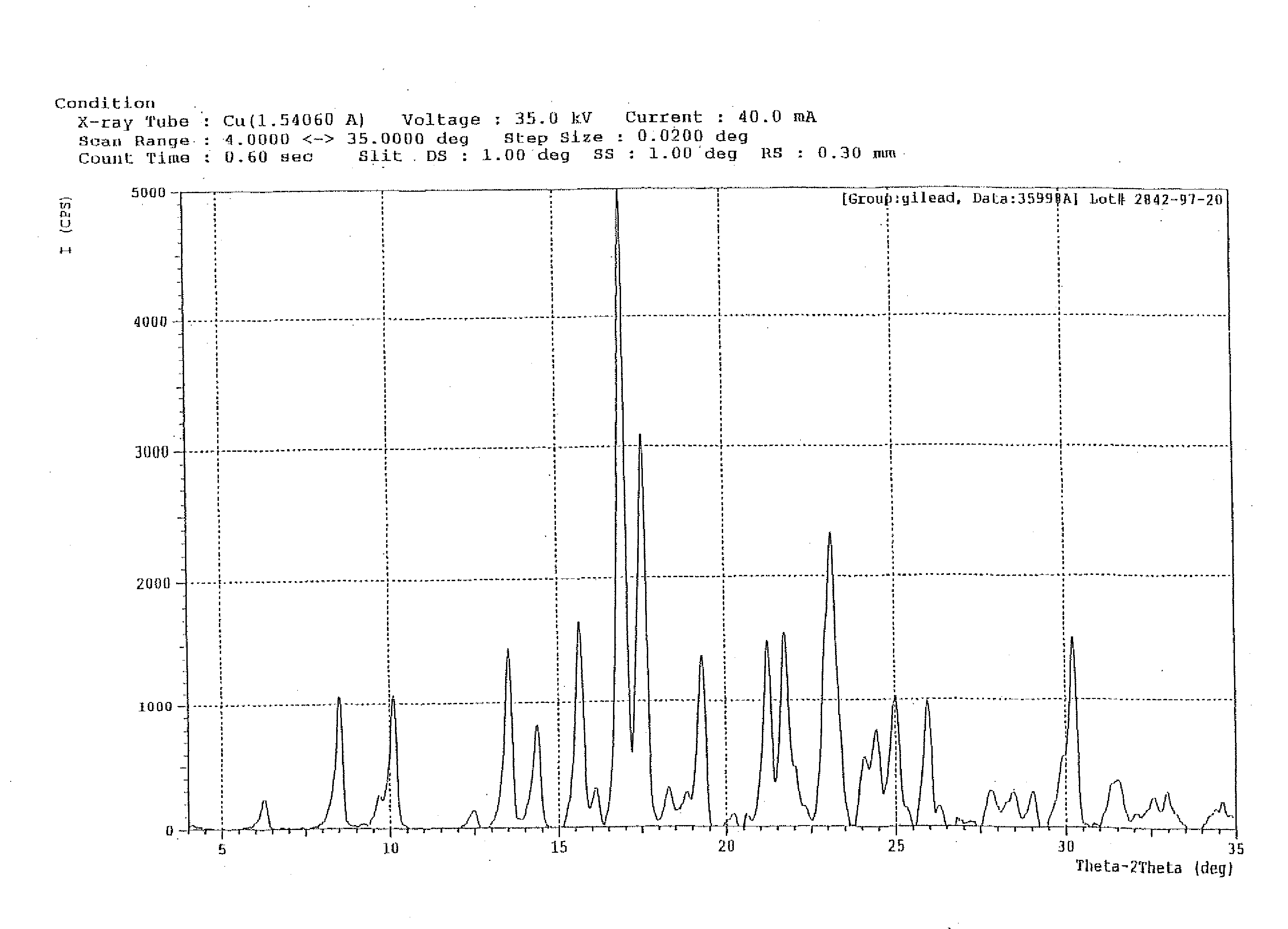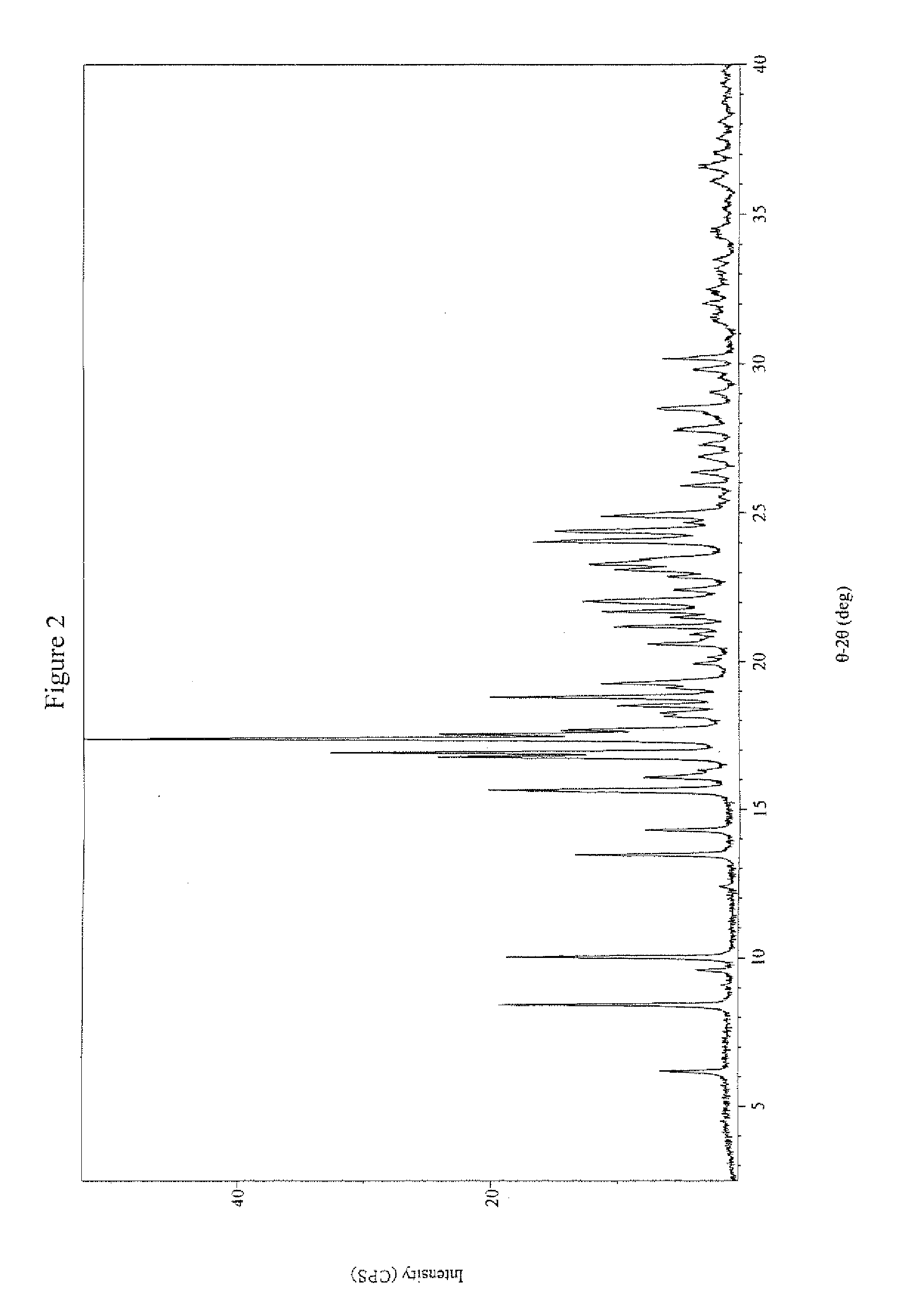Crystalline pyridazine compound
- Summary
- Abstract
- Description
- Claims
- Application Information
AI Technical Summary
Benefits of technology
Problems solved by technology
Method used
Image
Examples
example 1
Synthesis of Crystalline 5-((6-(2,4-Bis(trifluoromethyl)phenyl]pyridazin-3-yl)methyl)-2-(2-fluorophenyl)-5H-imidazo[4,5-c]pyridine
[0076]
[0077]To a reactor, containing 2,4-bis(trifluoromethyl)bromobenzene (1.00 eq) and tetrahydrofuran (THF), was charged Isopropyl magnesium chloride (1PrMgCl) (2 M in THF, 1.14 eq) while maintaining the content at −10° C. The mixture was agitated at −10° C. until the reaction was completed by HPLC analysis. The resultant mixture was transferred to the second reactor, containing trimethyl borate (2.26 eq) and THF held at a temperature of −10° C. The reaction was then monitored by HPLC until 1,3-bis(trifluoromethyl)benzene was not more than 2%. Aq. HCl (aqueous hydrochloric acid), prepared from water and concentrated 37% hydrochloric acid (HCl) were then added to quench the reaction while maintaining the content at not more than 25° C. After agitating the content for 1-2 h and settling for ca. 30 minutes, the layers were separated. The organic layer was ...
example 2
Formulation of Compositions Using Compound (1)
[0108]Crystalline compound (1) is used as an intermediate to produce pharmaceutically acceptable solutions. The following examples are made on a weight by weight basis to achieve 10% w / w active. To make 12 kg solution, exemplary quantitative compositions of compound (1) capsules, 20 mg and 40 mg are listed below.
[0109]Quantitative composition of Compound (1) capsules, 20 mg and 40 mg
Capsule UnitFormula(mg / unit)CompendialComponents% w / w20 mg40 mgReferenceFunctionCompound 110.0020.040.0NoneActiveingredientOleic Acid84.55169.1338.2NFSolventPolysorbate 805.0010.020.0NFSurfactantButylated Hydroxytoluene0.100.20.4NFAntioxidant(BHT)Butylated Hydroxyanisole0.350.71.4NFAntioxidant(BHA)Capsule Sealing SolutionaCapsule sealantEthanol—b—b—bUSP—Purified water—b—b—bUSP—Capsule Shell, Size 0 Licaps ™N / A1 each1 eachNoneCapsule shellWhite OpaqueTotal100.00200.0400.0aComposition is 1:1 w / w ethanol:water solution.bRemoved during the capsule sealing process...
example 2a
Micronized Formulation of Compound (1)
[0130]Micronized drug substance (Jet mill-00 at 60-80 psi; 3-4 microns average size, about 7-8 sq. meters / g) was dry blended with lactose, microcrystalline cellulose, croscarmellose sodium, sodium lauryl sulfate, tartaric acid, and hydroxypropyl cellulose. The blend was granulated by spraying the blend solution. The granules were dried in a fluid-bed. The dried granules were sized by passing through a mill, and then blended with additional microcrystalline cellulose and croscarmellose sodium. The powder blend was lubricated by adding magnesium stearate and then compressed into tablets using a rotary tablet press. The tablets were subsequently film-coated.
[0131]The table below is a summary of various formulations tested in dogs dosed at 40 mg compound (1), corresponding to approximately 4 mg / kg. The table illustrates the superior performance of the solubilized compound (1) formulations.
In-vivo Data SummaryDrug LoadCmaxAUC24Dosage FormProcessFormu...
PUM
| Property | Measurement | Unit |
|---|---|---|
| Temperature | aaaaa | aaaaa |
| Fraction | aaaaa | aaaaa |
| Fraction | aaaaa | aaaaa |
Abstract
Description
Claims
Application Information
 Login to view more
Login to view more - R&D Engineer
- R&D Manager
- IP Professional
- Industry Leading Data Capabilities
- Powerful AI technology
- Patent DNA Extraction
Browse by: Latest US Patents, China's latest patents, Technical Efficacy Thesaurus, Application Domain, Technology Topic.
© 2024 PatSnap. All rights reserved.Legal|Privacy policy|Modern Slavery Act Transparency Statement|Sitemap



